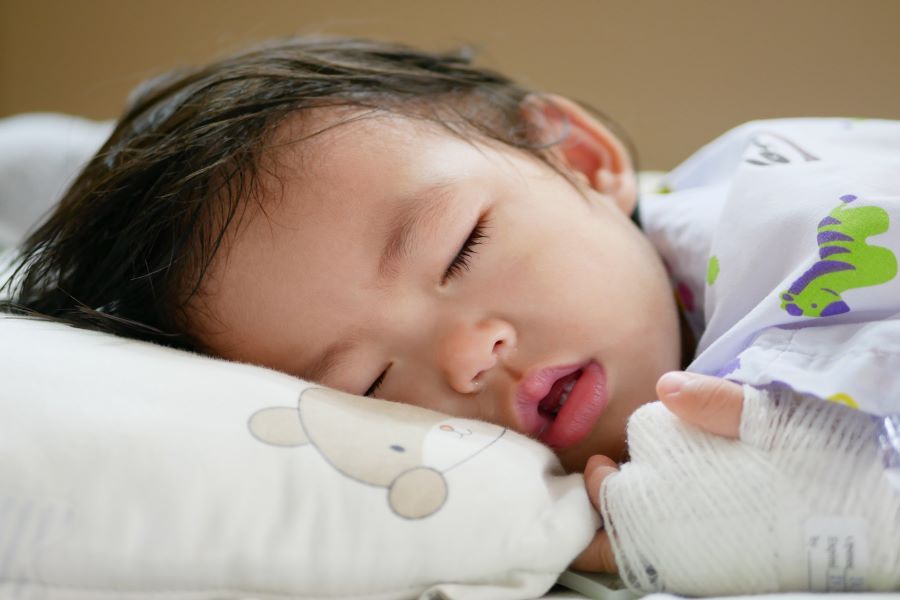Understanding Neuroblastoma in Children


Before nerve cells mature, they are known as “neuroblasts.” Neuroblastoma is a rare type of cancer in which these neuroblasts divide uncontrollably and form tumors. Although it is rare overall, accounting for less than 10 percent of all childhood cancers, it is the most common type of solid tumor found in children younger than age 1, according to Seattle Children’s Hospital. An estimated 600-800 children in the United States are diagnosed with neuroblastoma annually.
Diagnosis
While the cancerous cells can form anywhere in the body, the most commonly start in the adrenal glands that rest atop the kidneys. However, they can also be found in the chest, pelvis, neck, and spinal cord. Once formed, the cancerous cells can spread to other body areas. A physician or parent may feel a small tumor where the disease has spread, which might include the lymph nodes, bones, liver, lungs, or skin. A child may not begin to experience symptoms until a tumor grows large enough to press on surrounding organs. Some symptoms children can experience include:
- Bone pain
- Decreased appetite
- Difficulty breathing
Horner’s syndrome, a series of symptoms associated with neck tumors that cause droopy eyelid, constricted pupils, decreased sweating on one side of the face and flushed skin
- Stomach pain
- Swollen stomach
- Trouble walking
- Unexplained bruising
Many children are born with neuroblastoma, but it is not diagnosed until the tumor has spread. Examples of methods used to diagnose neuroblastoma include:
- Bone marrow aspiration or biopsy to test the bone marrow for cancerous cells
- Computed tomography (CT) scan to identify tumors
- I-MIBG scan where a small amount of radioactive iodine is injected. The iodine highlights areas in the body that is specific to neuroblastoma.
- Surgical biopsy or removal of a tumor to test for cancerous cells
- Urine test for catecholamines, a substance cancerous tumors produce
In most cases of neuroblastoma, the cause is unknown. However, neuroblastoma can have some familial or genetic influence in families.
Treatment
Treatment for neuroblastoma depends upon the disease’s location and how far it has spread. A doctor may categorize neuroblastoma as low, intermediate, or high risk. An estimated 50 percent of all children with neuroblastoma are considered high risk, according to the Children’s Hospital of Philadelphia. Low-risk neuroblastoma is often treated with surgery to remove a small tumor. Intermediate-risk neuroblastoma may involve surgery and chemotherapy or taking medications to kill off cancerous cells. High-risk treatments can include surgery, chemotherapy, and radiation treatments to shrink the cancerous tumor.
Physicians and researchers are also testing the effectiveness of experimental treatments, such as:
- Antibody therapy
- Bone marrow or stem cell transplants
- Investigational drugs
- Tumor vaccines
Survival rates depend upon many factors. The sooner neuroblastoma is diagnosed, the better the survival rate. The 5-year survival rate for children diagnosed younger than age 1 is 90 percent, while it is 68 percent for those diagnosed between ages 1 and 4, according to the National Cancer Institute. Children diagnosed between 5 and 9 years old have a 52 percent 5-year survival rate.
Sources:
- Boston Children’s Hospital
- Neuroblastoma.
The Children’s Hospital of Philadelphia - Neuroblastoma Treatment and Diagnosis.
KidsHealth - Neuroblastoma.
National Cancer Institute - General Information About Neuroblastoma.
Seattle Children’s Hospital - Neuroblastoma.
St - Jude Children’s Research Hospital
- Solid Tumor: Neuroblastoma.
Powered by Bundoo®












































